If you’re a beginner in the world of gardening, or an expert trying to expand your horizon and collection, you’ve come to the right place. Coming in small sizes, herbs prove to make a huge difference to home cooking, not to mention that it also produces rich aroma for your home and cooking.
Unfortunately, you’ll see that herbs are amongst the priciest ingredients in the market whenever you go to the supermarket. The easiest solution? Try to grow your own! Whether it’s in a pot, container, or outdoor garden, here we’ve listed down the easiest herbs to grow for beginners.
One great thing about herb is its versatility both in usage and plantation. You can grow herbs simply by providing them with enough sunlight, water, and occasional fertilizer. Additionally, using homegrown herbs such as basil, sage, oregano, mint, and thyme, you can give millions of flavor in your home cooking.
If you’re feeling adventurous, you can also create natural spray or skincare using these ingredients. Imagine having an endless supply of your favorite smell for free—what a deal, right?
Wanting to start a gardening hobby within the comfort of your home?
Worry not; here’s a beginner-friendly guide on the easiest herbs to grow for beginners and require a little maintenance. Let’s dive in!
1. Sage (Salvia officinalis)
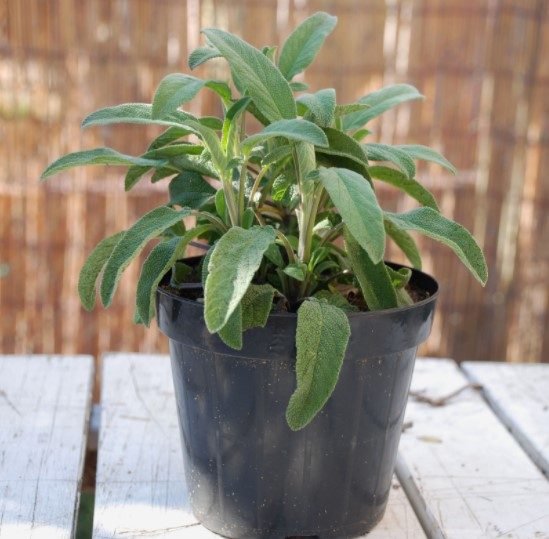
A great herb for cooking and home decor, sage is one of the easiest herbs to grow for beginners. Sage comes in a wide range of variety. Some are green and yellowish, some in other colors.
Sage is also evergreen, meaning that once you’ve planted it, you can harvest the leaves during any time of the year. When you want to plant sage in your house, make sure that it’s located in a sunny spot where the soil is fertile and well-drained.
- Harvest time: 65-80 days (depending on type)
- Ideal temperatures: 45-75° F
- Planting time: Spring, fall
- Hardiness zone: USDA Hardiness Zone 5 to 9
- Light preferences: Sun/part shade
2. Parsley (Petroselinum crispum)
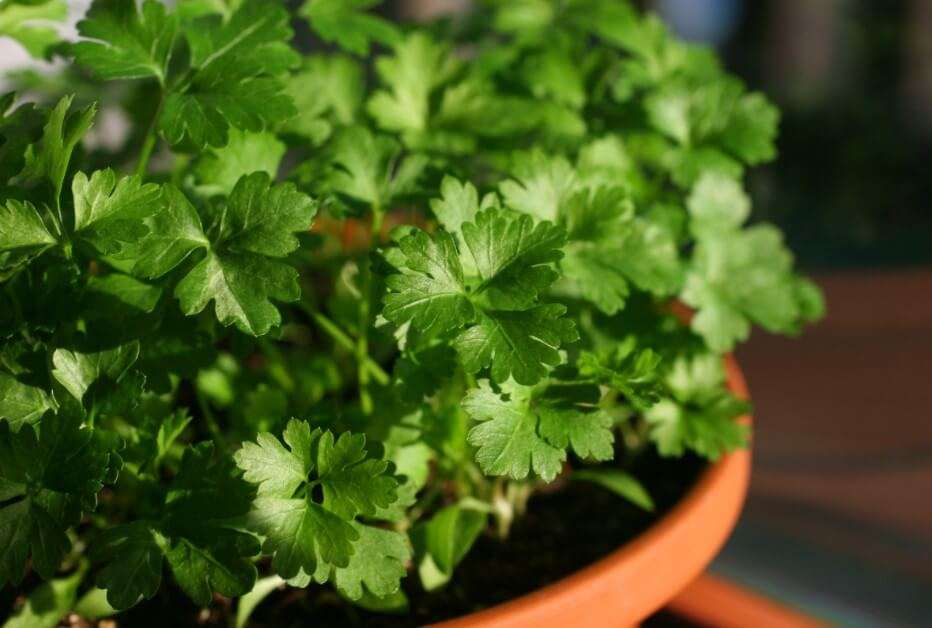
Who can resist the aromatic smell of fresh parsley? Right, no one! The biennial herb is famous in the kitchen, often used as toppings for pizza, lasagna, and other menus.
Growing parsley requires a little bit of effort since it’s slow to germinate, though it’s still pretty much beginner-friendly.
To be successful, make sure to plant the seeds early indoors and provide abundant sunlight to them. If you’re an outdoor gal, you can move parsley outside during spring when the soil has warmed up. Make sure to choose rich soil with enough sun exposure.
- Harvest time: 65-80 days (depending on type)
- Ideal temperatures: 45-75° F
- Planting time: Spring, fall
- Hardiness zone: USDA Hardiness Zone 4 to 9
- Light preference: Sun
3. Oregano (Origanum vulgare)
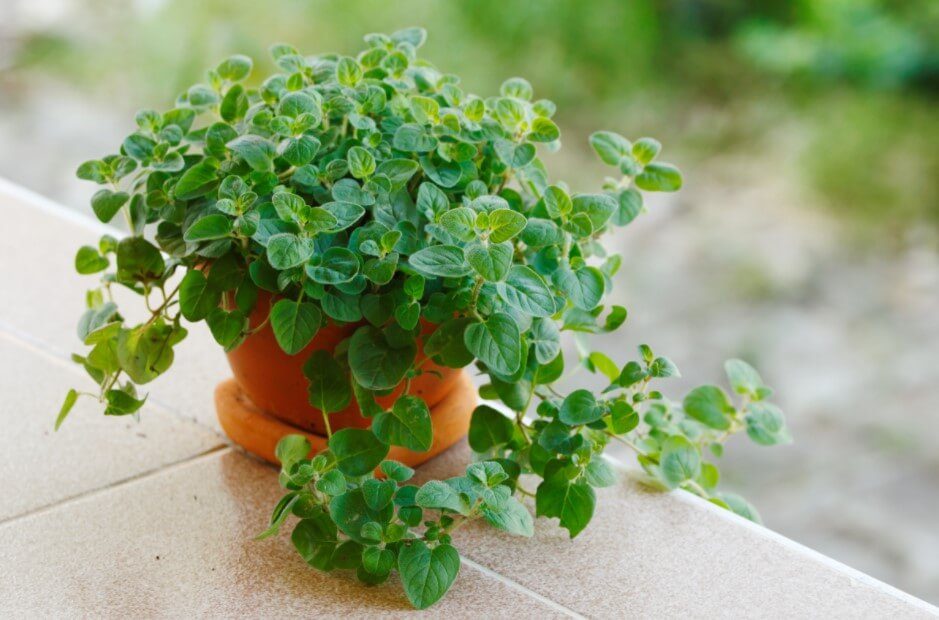
Coming from the mint or Lamiaceae family, oregano has been used for thousands of years to spice up dishes, create aromatic oil, and treat illnesses as well as health conditions.
The use of oregano dates back to the Greek and Roman civilizations! Even the word oregano comes from the Greek words “oros” or mountain and “ganos” or joy. How awesome is that?
Oregano comes in different types and varieties, with the most common ones being Oregano vulgare or Spanish thyme and wild marjoram. The plant favors warm spots with sunny areas, and you can start harvesting it once it grows above 10cm tall.
- Harvest time: 65-80 days (depending on type)
- Ideal temperatures: 45-75° F
- Planting time: Spring, fall
- Hardiness zone: USDA Hardiness Zone 4 to 10
- Light preferences: Part to full sun
4. Mint (Mentha)
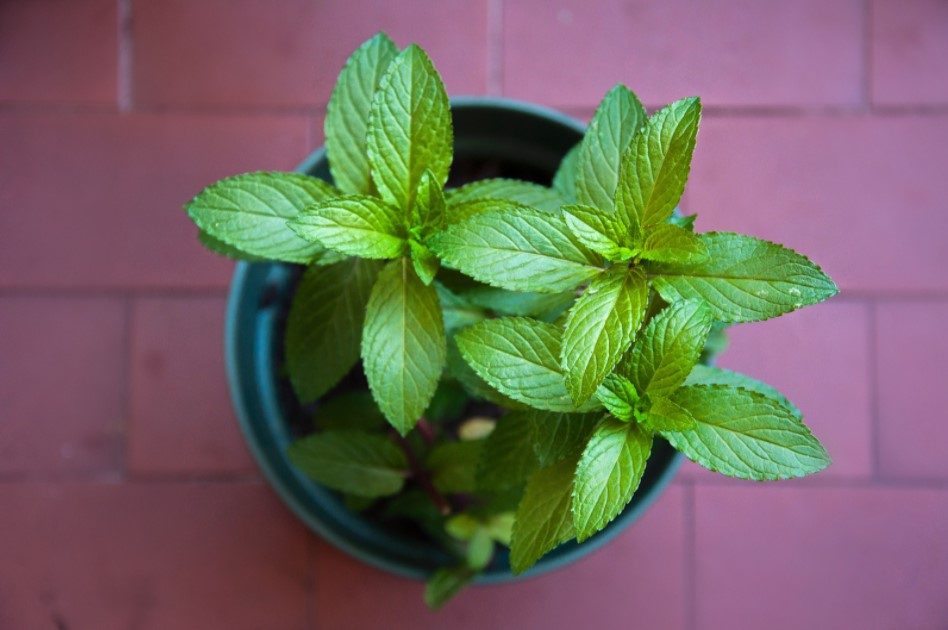
A delicious addition to your tea, mint is everyone’s favorite go-to herb for a kick of refreshing taste. Mint tastes fruity and exudes a fragrant smell.
It also comes in wide varieties such as peppermint, spearmint, apple mint, and many more. You can easily distinguish each by its square stems and degrees of the pungent smell.
Besides being a kitchen companion, mints are also used for herbal medicines, air fresheners, and ground covers. If displayed inside, it’ll create a pretty green accent in your home.
- Harvest time: 65-80 days (depending on type)
- Ideal temperatures: 45-75° F
- Planting time: Spring, fall
- Hardiness zone: USDA Hardiness Zone 3 to 8
- Light preferences: Part shade
5. Thyme (Thymus vulgaris)
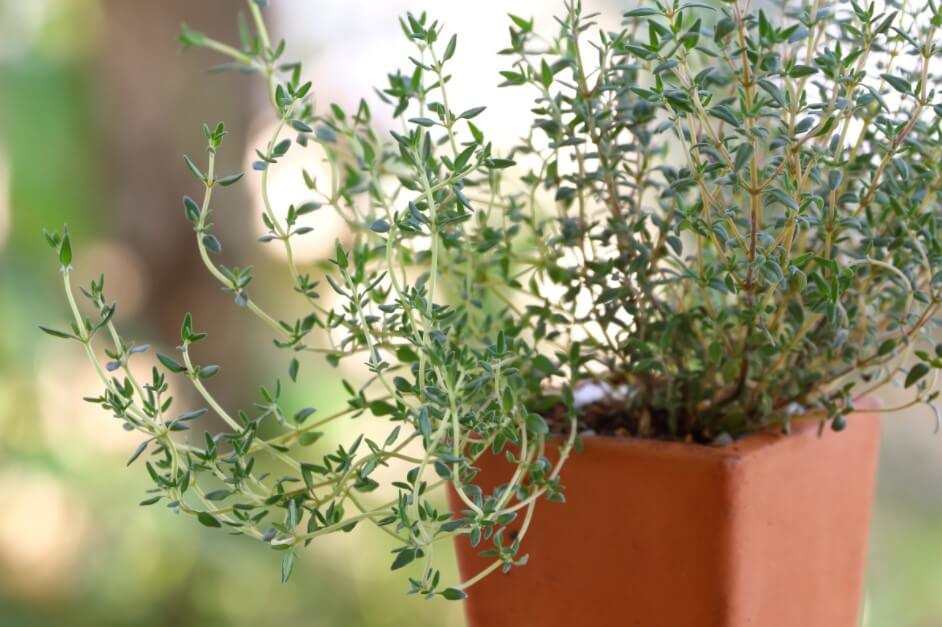
Belonging to the mint family, thyme is probably one of the most versatile herbs out there. Its use dates back to ancient Greece and has developed into over 400 subspecies you can experiment on.
Thyme is famous for its distinct taste, smell, and look. Usually, people use thyme for its medicinal qualities, for example lowering blood pressures and treating acne.
- Harvest time: 14-28 days
- Ideal temperatures: 68-86° F
- Planting time: Spring, summer
- Hardiness zone: USDA Hardiness Zone 5 to 9
- Light preference: Full sun
6. Dill (Anethum graveolens)
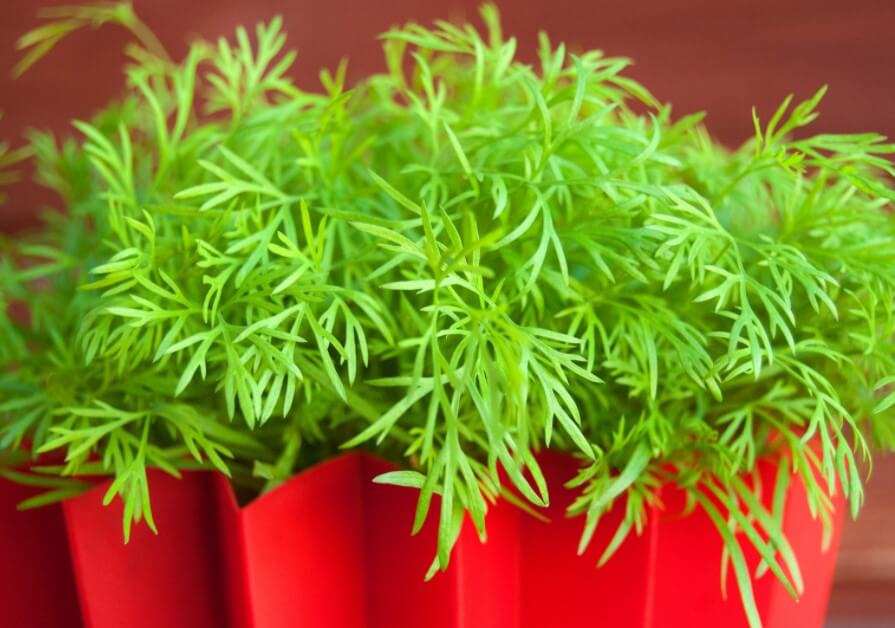
Often used as an ingredient in curry powder, dill can be easily spotted due to its yellow flowers and distinct smell in the summer.
People usually use dill as an addition to their food, whether it’s rice, salads, or soups.
Dill is one of the easiest herbs to grow for beginners due to its low maintenance. You can grow it in your garden or indoors as long as there’s enough sun exposure.
- Harvest time: 90 days
- Ideal temperatures: 70° F
- Planting time: Late spring, summer
- Hardiness zone: USDA Hardiness Zone 2 to 11
- Light preference: Full sun
7. Chives (Allium schoenoprasum)
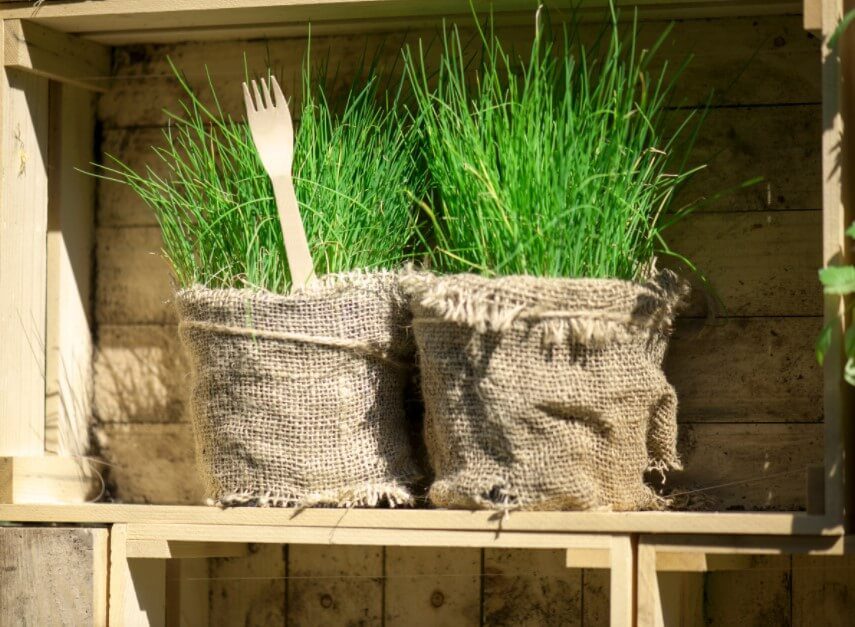
Familiar with this particular member of the onion family? Chives are easily spotted due to their slender, pointed leaves and fuzzy pink and purple color. Chives usually thrive in spring, just the time when the last frost melted down.
Once harvested, you can use it as an addition to your dishes. However, chives also make a great border planting or container for your garden.
- Harvest time: 30-60 days
- Ideal temperatures: 40-85° F
- Planting time: Spring
- Hardiness zone: USDA Hardiness Zones 3 to 10
- Light preference: Full sun
8. Cilantro (Coriandrum sativum)
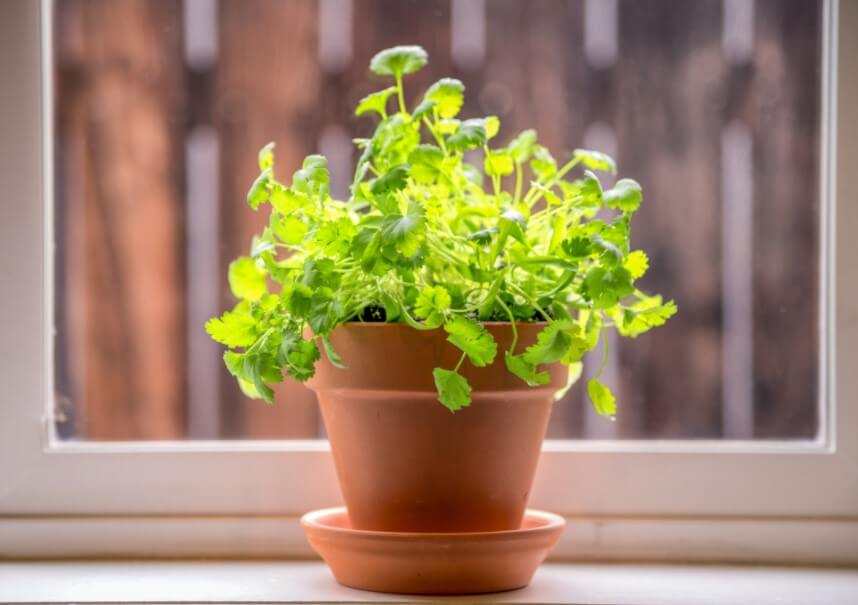
One of the most versatile herbs in the kitchen, who could’ve known that cilantro is also one of the easiest herbs to grow for beginners?
This is because cilantro is fast to germinate and harvest, meaning that you can create endless supply by regularly planting it in your garden.
- Harvest time: 45 days
- Ideal temperatures: 50-85° F
- Planting time: Fall, spring
- Hardiness zone: USDA Hardiness Zones 8 to 10
- Light preference: Full sun or light shade
9. Lemongrass (Cymbopogon)
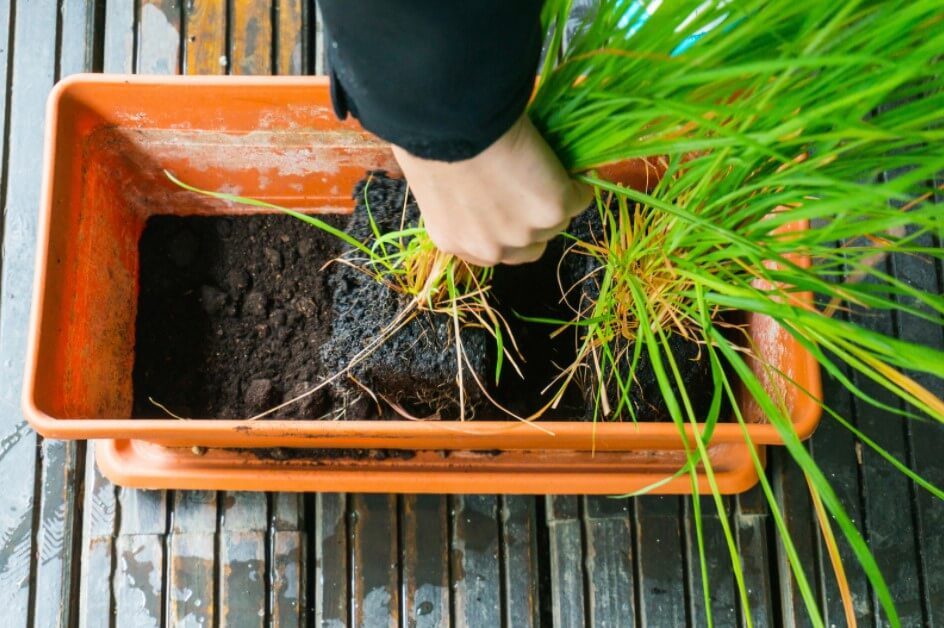
Once the weather becomes cold, it’s time to brew some lemongrass tea. Being a tropical herb, lemongrass is packed with a strong, citrusy flavor and smell that radiates comfort.
This herb is prized especially in Asian dishes, for example, sauces and soups. Easily spot lemongrass in your garden when it has grown and clumped into 3 to 5 inches tall plant.
- Harvest time: 100 days
- Ideal temperatures: 65- 85° F
- Planting time: Summer
- Hardiness zone: USDA Hardiness Zones 8 to 10
- Light preference: Full sun
10. Bay Laurel (Laurus nobilis)
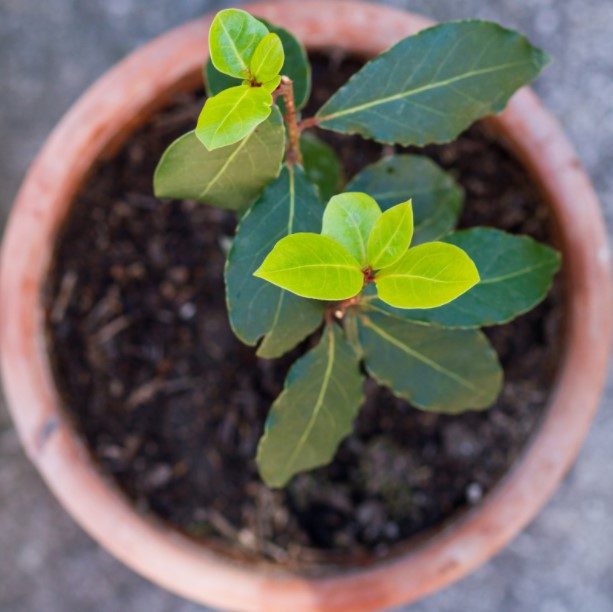
A famous aromatic leaf often used in Mediterranean cooking, bay laurel can be processed both in a dried or ground form.
This herb is an evergreen herb that comes as a small shrub or tree that you can harvest all year long. Aside from being a tasty addition to your food, bay laurel is also beneficial to treat open wounds and other illnesses.
- Harvest time: Harvest individual leaves all year round
- Ideal temperatures: 60-75° F
- Planting time: Spring, summer
- Hardiness zone: USDA Hardiness Zones 8 to 10
- Light preference: Full sun
11. Basil (Ocimum basilicum)
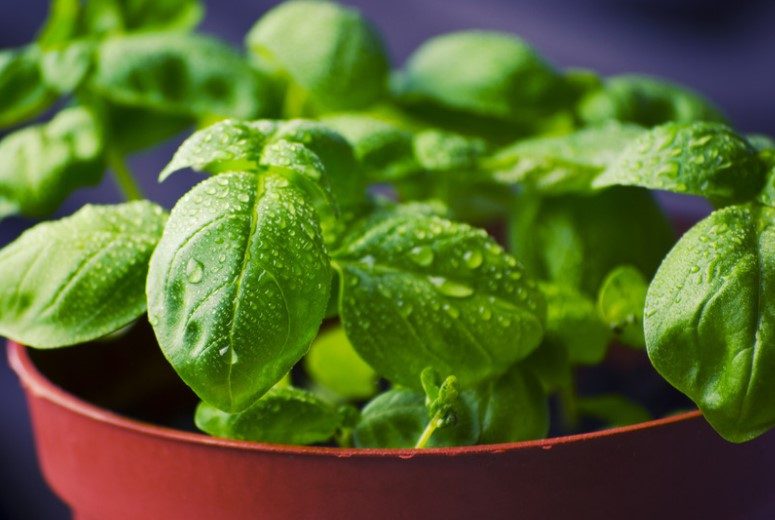
Who doesn’t know this popular herb? Basil is known for its tasty taste and versatility that makes it applicable to any cooking and beverage.
The leaves are usually present on pizza, spaghetti, meat, fish, and other Italian or Mediterranean dishes because it’s proven to enhance the flavor. You can also create a basil tea that is famous for its stimulant effect.
- Harvest time: 50 to 60 days
- Ideal temperatures: 80-90° F
- Planting time: Spring, summer
- Hardiness zone: USDA Hardiness Zones 10 to 11
- Light preference: Full sun
12. Tarragon (Artemisia dracunculus)

A perennial herb known for its tall, light green leaves and greenish or yellowish flowers, tarragon is famous for being the easiest herbs to grow for beginners in their garden and home.
The most famous variety of tarragon is French tarragon. Nuff said that it’s a great addition to meat, poultry, and seafood!
- Harvest time: 50 to 60 days
- Ideal temperatures: 20-90° F
- Planting time: Spring
- Hardiness zone: USDA Hardiness Zones 5
- Light preference: Full sun
13. Lemon Balm (Melissa officinalis)
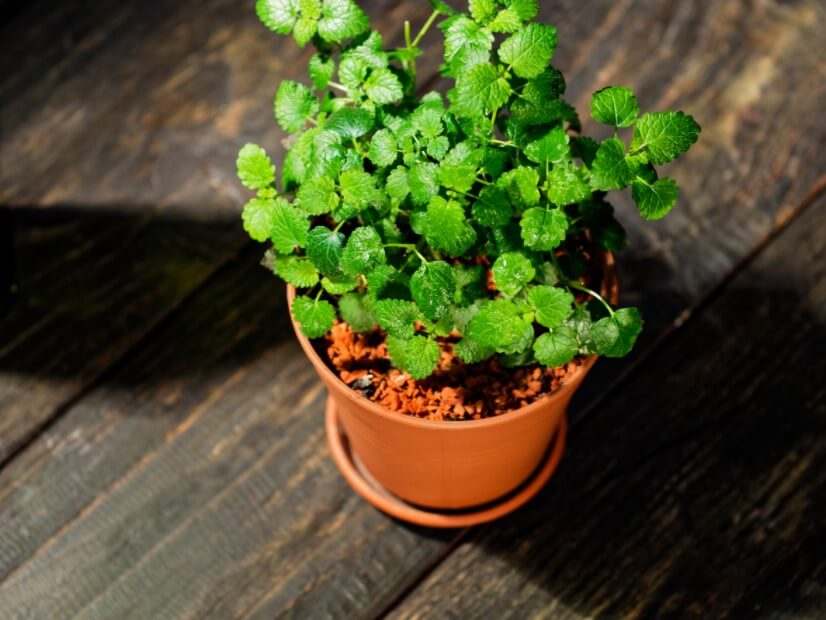
Not to be confused with the actual lemon fruit, lemon balm is a herb with a mild lemon scent and taste.
The plant presents as a perennial shrub with a bushy leaf. Lemon balm is known for its benefits in reducing anxiety, insomnia, and stress.
- Harvest time: All year round
- Ideal temperatures: 20-90° F
- Planting time: Spring, summer, fall
- Hardiness zone: USDA Hardiness Zones 4 to 9
- Light preference: Shade
14. Fennel (Foeniculum vulgare)

Arguably one of the easiest herbs to grow for beginner, fennel is famous for its resistance to weather, insects, and pests.
Fennel itself is a close relative of cumin, dill, and caraway, making it a cook’s best friend in the kitchen. You can find fennel in dishes such as pasta.
- Harvest time: 84 to 90 days
- Ideal temperatures: 70-90° F
- Planting time: Spring, summer
- Hardiness zone: USDA Hardiness Zones 2 to 5
- Light preference: Full sun
15. Chamomile (Matricaria chamomilla)
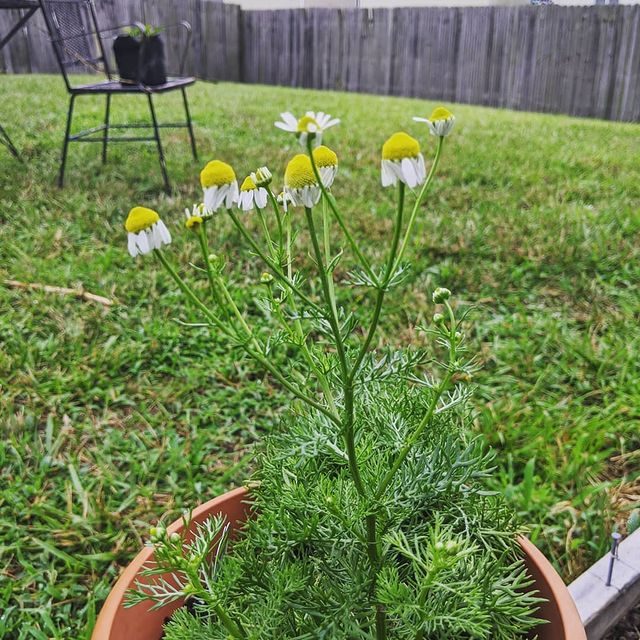
You might know chamomile for its daisy-like features, but it actually has a lot more benefits than being eye candy.
If brewed right, chamomile makes a great and effective herbal infusion to treat various illnesses and stress.
- Harvest time: 50 to 60 days
- Ideal temperatures: 68-100° F
- Planting time: Spring, summer
- Hardiness zone: USDA Hardiness Zones 3 to 9
- Light preference: Full sun
So, those are the 15 easiest herbs to grow for beginners. Which one do you want to grow in your garden?
